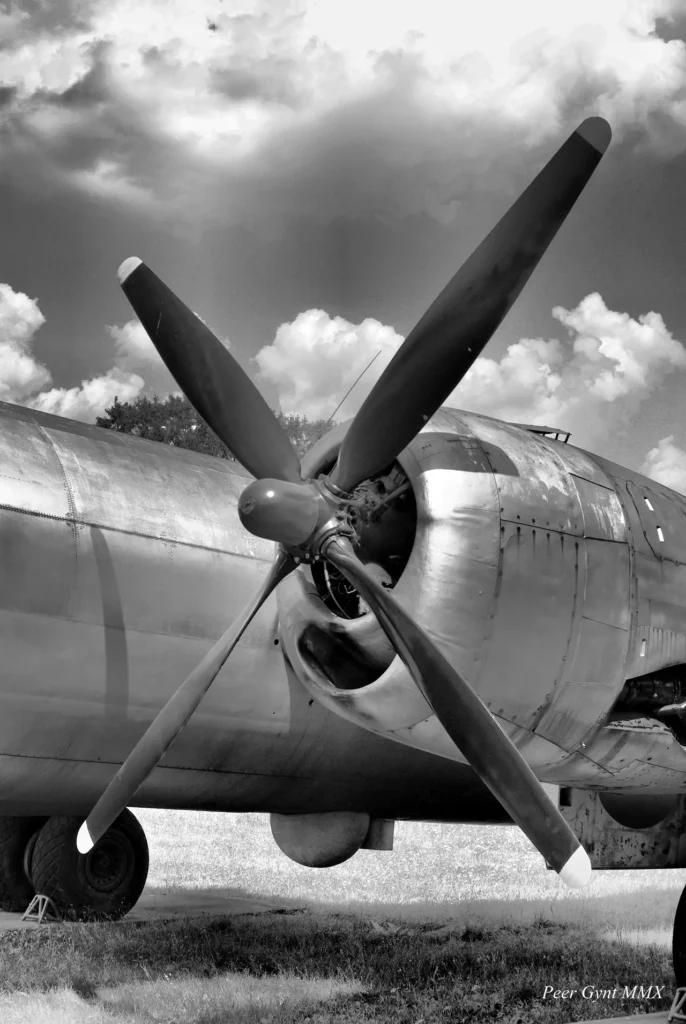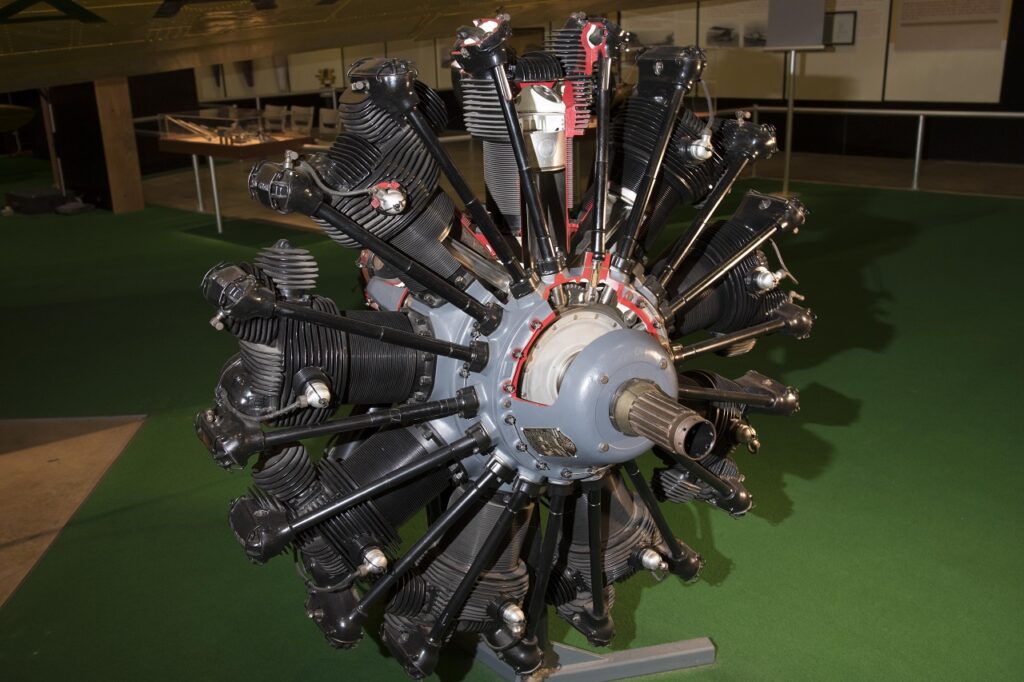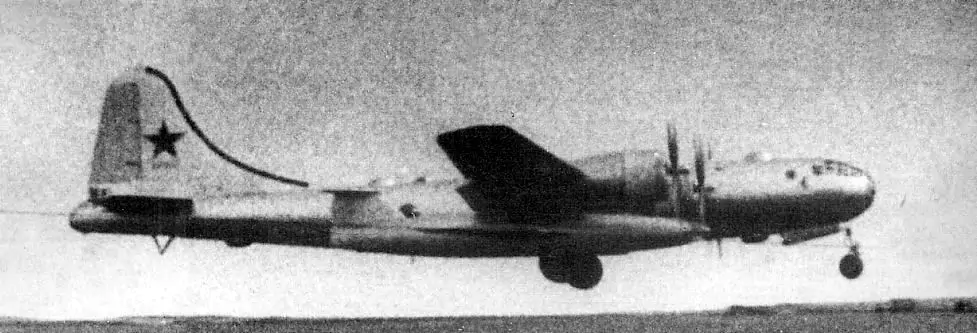The ASh-73 is a member of the family of Soviet 18-cylinder engines and is perhaps the most famous of all the engines in this class. It was designed in 1944 and mass-produced from 1947 to 1957. It was produced at two factories in Perm and Rybinsk.
One of the most notable applications of the ASh-73 was in the Tu-4 heavy bomber, a Soviet Strategic Bomber that was based on the American B-29 Superfortress. In this role, the ASh-73 was used in its turbocharged version, known as the ASh-73TK. Interestingly, the TK-19 turbocharger used on the ASh-73TK was inspired by an American prototype, but the engine itself was original.
In addition to its use on the Tu-4, the ASh-73 was also utilized in a low-altitude version equipped with a monitoring station installed on Be-6 flying boats.

Development history
The ASh-73 engine has a rich and complex history that can be traced back to the Wright R-1820 Cyclone, an American aircraft engine developed in the 1930s. In 1933, the Soviet Union signed an agreement with the Curtis-Wright Corporation to license and receive technical assistance for producing the Wright R-1820-F3 engine, which became known in the Soviet Union as the M-25.
As a way to produce the American engine in the Soviet Union, a new factory known as Plant No. 19 was established in Perm. In December 1933, the Council of Labor and Defense issued a decree ordering the plant to assemble the first 50 engines from purchased parts by the end of 1934.
However, the Wright R-1820 Cyclone engine was no longer a new design, so in March 1934, the Council of Labor and Defense ordered the establishment of a design department at the plant to improve the American engine in terms of power, altitude, reliability, and fuel, and oil consumption. A.D. Shvetsov was appointed as the chief designer of the Experimental Design Bureau at Plant No. 19 (OKB-19, later the Perm Motor Design Bureau) which was created to carry out this task.

The OKB-19 would go on to design a number of derivative engines based on the Wright R-1820 Cyclone, including the M-25, M-62, M-63, M-70, M-71, and M-72, which would eventually lead to the development of the ASh-73 engine.
The M-25 engine, which was based on the Wright R-1820-F3, became one of the most popular Soviet aircraft engines in the latter half of the 1930s. It was produced by Plant No. 19 until 1942, with a total of 13,888 engines produced.
From the M-25, the Soviet Union developed a number of derivative engines, including the M-62, which was based on the M-25 but equipped with a two-speed monitoring station. The M-62 became one of the most famous and widely produced Soviet aircraft engines, remaining in production for over 60 years.
Other derivative engines include the M-63, which was a boosted version of the M-62, and the M-70, which was an 18-cylinder engine based on the M-25. However, the M-70 did not meet the requirements of the Soviet Air Force and was not put into mass production.
The M-71 was a further development of the M-70, based on the M-63 units. It was developed in 1939 and four copies were made, but it did not enter mass production.
The M-72 was a forced version of the M-71 with a single-stage two-speed monitoring station. It was planned to mass-produce the M-72 from the third quarter of 1945 at Plant No. 19, but instead, they began to introduce an improved version known as the M-73 (later designated the ASh-73) with a shortened piston stroke.
Production
The ASh-73 engine was designed in 1944 and three prototypes were completed at the end of that year, with an additional five prototypes made later. These prototypes featured new magnetos and main bearings based on R-3350 engines which were sourced from interned B-29s in Soviet territory. At the beginning of 1946, Plant No. 19 began conducting bench tests on the ASh-73 and state tests began in August of that year. The ASh-73 finally passed state tests in 1948.
Plant No. 19 began preparing for the mass production of the ASh-73 at the beginning of 1946. Mass production began in 1947 and continued at Plant No. 19 until 1953. Production of the ASh-73 was also carried out at Plant No. 36 in Rybinsk until the end of 1957. In total, 14,310 ASh-73 engines were produced.
The Tu-4 and the ASh-73TK
The Tu-4 was a reverse-engineered replica of the Boeing B-29 Superfortress. However, the designers of the Tu-4 chose not to copy the American R-3350 engine, opting instead for the domestically developed ASh-73TK engine.
The ASh-73TK was chosen for its similarity in size and power to the Curtiss-Wright Duplex-Cyclones used on the B-29, allowing it to be fitted into the Soviet copies of the B-29’s cowlings and nacelles.

In the other hand, the turbochargers with their control system, magneto, carburetors, and heat-resistant bearings were copies of those found in the American engine.
The “TK” in the name stands for “Turbokompressor” or “turbocharger” in Russian. The ASh-73TK had two first-stage TK-19 exhaust-driven turbochargers and produced 2,400 hp at takeoff. In addition to the first-stage turbochargers, the ASh-73TK also featured a second supercharging stage with PTsN single-speed centrifugal blowers driven by the engines. The engine was carburetted, rather than fuel-injected.
Known versions:
- The base ASh-73 model produced 2000/2400 horsepower and weighed 1330 kg. It was used on a variety of aircraft and was built in series.
- The ASh-73TK (“Turbokompressor”), the main serial version of the engine, had a power output of 2000/2400 horsepower and weighed 1355 kg (without turbochargers 1275 kg). It featured two TK-19 turbochargers copied from an American model and an intercooler. During its mass production, the ASh-73TK underwent several modifications, including changes to the crankcase, pistons, ignition, connecting rods, and crankshaft. The ASh-73TK was used on aircraft such as the Tu-4, Be-6, Tu-75, Tu-80, and S-82.
- The rev-boosted ASh-73TKF had a power output of 2360/2720 horsepower, but it was not produced in series. Prototypes were made and bench-tested.
- The ASh-73TKFN, which had direct fuel injection, produced 2400/2800 horsepower, but it was not produced in series either. Prototypes were created and tested.
- The ASh-73 “combined” project from 1949 involved installing a pulse turbine on the ASh-73TK, but there is no information available on whether prototypes were made.
Shvetsov ASh-73TK specification
| Model | ASh-73TK | |
| Type | 18-cylinder two-row star-shaped, air-cooled, geared, with one-stage single-speed monitoring station; | |
| Supercharger | 2 x TK-19 exhaust-driven turbo-chargers and a second supercharging stage, with PTsN single-speed centrifugal blowers driven by the engines. | |
| Valvetrain | Pushrod, two valves per cylinder, sodium-cooled exhaust valves | |
| Reduction gearbox | planetary, gearing ratio of 0.375 | |
| Bore | 6.125 in. | 155.6 mm |
| Stroke | 6.689 in | 169.9 mm |
| Displacement | 3.546.8 cu in | 58.122 liters |
| Compression Ratio | 6.9:1 | 6.9:1 |
| Diameter | 54.13 in | 1375 mm |
| Length | 90.16 in | 2290 mm |
| Weight | 2,952 lb | 1,339 kg |
| Fuel consumption (cr) | 0.69-0.74 lb/hp-hr | 315-335 g/hp-hr |
| Rating (take off) | 2,400 hp | |
| Rating (normal) | 2,000 hp (2,400 rpm, 28,215-30,515 ft or 8,600-9,300 m) | |
| Military | 2,200 hp (26,250-28,545 ft or 8,000-8,700m) |
|
Further reading
- Boeing B-29 Superfortress Facts: 11 things to know
- Tupolev Tu-4 Standard Specification & Performance
- Wright R-3350 vs Shvetsov ASh-73KT Comparison chart
Source
- Russian Piston Aero Engines: The Complete Story by Victor Kotelnikov
- Russian Strategic Nuclear Forces by Oleg Bukharin, Frank Von Hippel
- Soviet Strategic Bombers: The Hammer in the Hammer and the Sickle by Jason Nicholas Moore
- Tupolev Tu-4: The First Soviet Strategic Bomber by Yefim Gordon and Dmitriy Komissarov